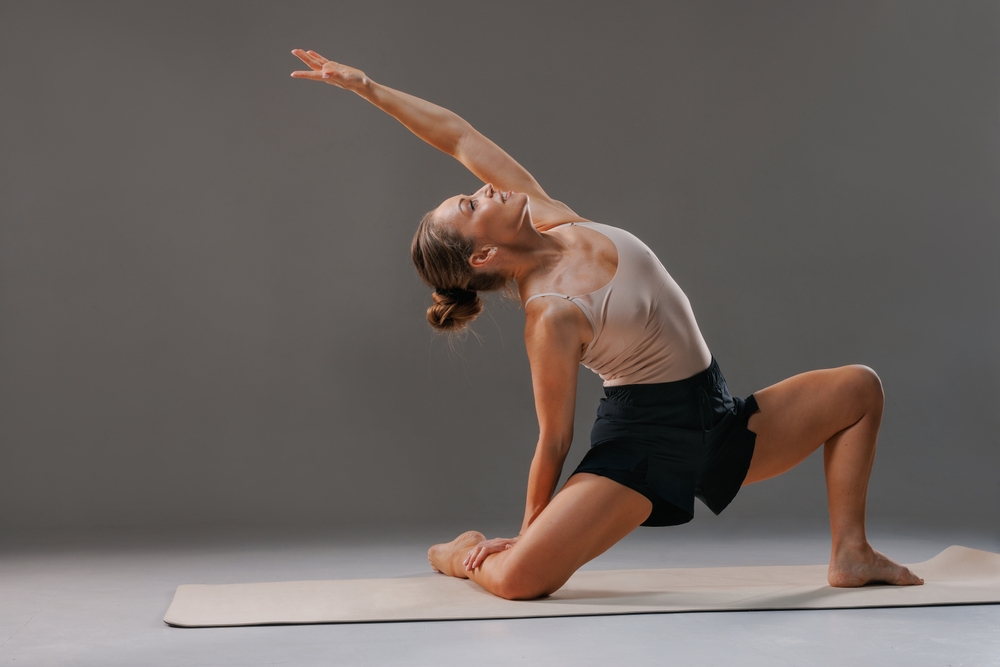The Role of Stretching in Flexibility
Flexibility is a fundamental component of physical fitness that influences overall mobility, posture, and injury prevention. It refers to the ability of muscles and joints to move through their full range of motion. One of the most effective methods to enhance and maintain flexibility is stretching. As we advance into 2025, understanding the role of stretching in flexibility remains crucial for athletes, fitness enthusiasts, and anyone looking to improve their physical health. This article explores the importance of stretching, the different types of stretching, and how consistent practice can significantly improve flexibility.

Understanding Flexibility and Its Importance
Flexibility is not just about being able to touch your toes or perform impressive yoga poses. It is a vital aspect of everyday movement and overall well-being. Good flexibility enables you to move freely without stiffness or pain, reduces the risk of injuries, improves posture, and enhances muscular coordination and balance. For athletes, flexibility can improve performance by allowing more efficient movement patterns and reducing muscle tension.
The human body naturally loses flexibility with age due to muscle tightening and joint stiffness. Sedentary lifestyles, repetitive movements, and poor posture can also contribute to decreased flexibility. Therefore, maintaining or improving flexibility through targeted exercises like stretching is essential for preserving mobility and quality of life.
Types of Stretching and Their Impact on Flexibility
Stretching exercises can be broadly categorized into several types, each serving different purposes and having unique effects on flexibility.
Static Stretching
Static stretching involves slowly extending a muscle to its farthest point and holding the position for a period, usually between 15 to 60 seconds. This type of stretching is effective in lengthening muscles and increasing range of motion. Static stretches are commonly performed after workouts to aid muscle recovery and reduce post-exercise soreness.
Research in 2025 continues to support static stretching as a valuable tool for long-term flexibility improvement. However, it is generally advised not to perform static stretching before activities requiring maximal power or speed, as it may temporarily reduce muscle strength.
Dynamic Stretching
Dynamic stretching consists of controlled, smooth, and deliberate movements that take muscles through their full range of motion. Examples include leg swings, arm circles, and walking lunges. Dynamic stretches are often used as part of a warm-up routine to prepare muscles for physical activity by increasing blood flow and muscle temperature.
Unlike static stretching, dynamic stretching can enhance performance when done before exercise. It also helps improve functional flexibility, which is the ability to move efficiently during everyday activities or sports.
Proprioceptive Neuromuscular Facilitation (PNF) Stretching
PNF stretching is a more advanced technique that involves both stretching and contracting the muscle group being targeted. Typically, a muscle is stretched passively, then contracted isometrically against resistance, and finally stretched again. This method can lead to significant gains in flexibility and is often used in rehabilitation settings.
Although PNF stretching requires a partner or specialized equipment, its effectiveness in improving muscle elasticity and joint range of motion makes it a valuable option for athletes and individuals with specific flexibility goals.
How Stretching Enhances Flexibility
Stretching improves flexibility through several physiological mechanisms. When a muscle is stretched, its muscle fibers, tendons, and connective tissues elongate. Over time, consistent stretching encourages these tissues to adapt by becoming more pliable and less prone to stiffness.
Muscle Fiber Adaptation
Muscle fibers contain components called sarcomeres, which are the basic units of muscle contraction. Regular stretching can increase the number of sarcomeres in series within a muscle fiber, allowing the muscle to lengthen more easily. This adaptation leads to an expanded range of motion and reduced tension during movement.
Neural Adaptations
Stretching also affects the nervous system’s control over muscles. Stretch receptors such as muscle spindles and Golgi tendon organs regulate muscle tension. Consistent stretching can desensitize muscle spindles, decreasing the reflexive contraction that resists stretching. At the same time, it can enhance the Golgi tendon organs’ ability to promote muscle relaxation. These neural changes improve stretch tolerance and contribute to increased flexibility.
Connective Tissue Remodeling
Tendons and ligaments are composed of collagen fibers that provide structural support to joints. Stretching stimulates remodeling of these connective tissues, increasing their length and elasticity. This adaptation helps joints to move more freely and reduces the risk of strains and sprains.
Practical Tips for Incorporating Stretching into Your Routine
To maximize the benefits of stretching for flexibility, it is essential to follow some practical guidelines:
- Warm Up First: Stretching cold muscles can lead to injury. Engage in light aerobic activity like jogging or cycling for 5–10 minutes before stretching.
- Be Consistent: Flexibility improvements require regular practice. Aim to stretch at least 3–4 times per week.
- Focus on Major Muscle Groups: Prioritize areas that tend to be tight, such as hamstrings, hip flexors, calves, shoulders, and lower back.
- Avoid Bouncing: Perform static stretches slowly and steadily without bouncing, which can cause muscle tears.
- Listen to Your Body: Stretch to the point of mild discomfort but never pain. Overstretching can lead to injuries.
- Combine Stretching with Strength Training: Balanced muscle strength supports joint stability and flexibility.
Conclusion
Stretching plays a vital role in enhancing and maintaining flexibility, which is fundamental for overall health, physical performance, and injury prevention. Whether through static, dynamic, or PNF stretching, regular practice encourages muscle and connective tissue adaptations that facilitate greater range of motion. As we move further into 2025, incorporating effective stretching routines into daily life remains a simple yet powerful strategy to improve mobility and quality of life for people of all ages and fitness levels. Prioritize stretching as part of your fitness regimen to reap the long-term benefits of improved flexibility.
Disclaimer: All content, including text, graphics, images and information, contained on or available through this web site is for general information purposes only. The information and materials contained in these pages and the terms, conditions and descriptions that appear, are subject to change without notice.




